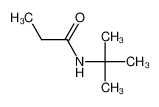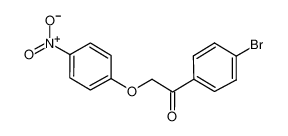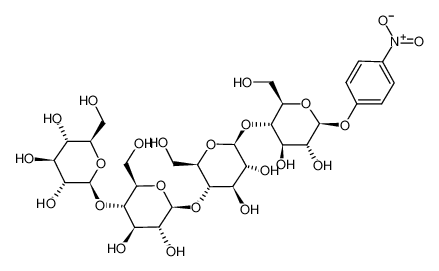1.Identification
1.1 GHS Product identifier
| Product name | 4-nitrophenol |
|---|
1.2 Other means of identification
| Product number | - |
|---|---|
| Other names | 4-Nitrophenol |
1.3 Recommended use of the chemical and restrictions on use
| Identified uses | For industry use only. 4-Nitrophenol is used to manufacture drugs (e.g., acetaminophen), fungicides, methyl and ethyl parathion insecticides, and dyes and to darken leather. |
|---|---|
| Uses advised against | no data available |
1.4 Supplier's details
| Company | MOLBASE (Shanghai) Biotechnology Co., Ltd. |
|---|---|
| Address | Floor 4 & 5, Building 12, No. 1001 North Qinzhou Road, Xuhui District, Shanghai, China |
| Telephone | +86(21)64956998 |
| Fax | +86(21)54365166 |
1.5 Emergency phone number
| Emergency phone number | +86-400-6021-666 |
|---|---|
| Service hours | Monday to Friday, 9am-5pm (Standard time zone: UTC/GMT +8 hours). |
2.Hazard identification
2.1 Classification of the substance or mixture
Acute toxicity - Oral, Category 4
Acute toxicity - Dermal, Category 4
Acute toxicity - Inhalation, Category 4
Specific target organ toxicity – repeated exposure, Category 2
2.2 GHS label elements, including precautionary statements
| Pictogram(s) |   |
|---|---|
| Signal word | Warning |
| Hazard statement(s) | H302 Harmful if swallowed H312 Harmful in contact with skin H332 Harmful if inhaled |
| Precautionary statement(s) | |
| Prevention | P264 Wash ... thoroughly after handling. P270 Do not eat, drink or smoke when using this product. P280 Wear protective gloves/protective clothing/eye protection/face protection. P261 Avoid breathing dust/fume/gas/mist/vapours/spray. P271 Use only outdoors or in a well-ventilated area. P260 Do not breathe dust/fume/gas/mist/vapours/spray. |
| Response | P301+P312 IF SWALLOWED: Call a POISON CENTER/doctor/…if you feel unwell. P330 Rinse mouth. P302+P352 IF ON SKIN: Wash with plenty of water/... P312 Call a POISON CENTER/doctor/…if you feel unwell. P321 Specific treatment (see ... on this label). P362+P364 Take off contaminated clothing and wash it before reuse. P304+P340 IF INHALED: Remove person to fresh air and keep comfortable for breathing. P314 Get medical advice/attention if you feel unwell. |
| Storage | none |
| Disposal | P501 Dispose of contents/container to ... |
2.3 Other hazards which do not result in classification
none
3.Composition/information on ingredients
3.1 Substances
| Chemical name | Common names and synonyms | CAS number | EC number | Concentration |
|---|---|---|---|---|
| 4-nitrophenol | 4-nitrophenol | 100-02-7 | none | 100% |
4.First-aid measures
4.1 Description of necessary first-aid measures
General advice
Consult a physician. Show this safety data sheet to the doctor in attendance.
If inhaled
Fresh air, rest. Refer for medical attention.
In case of skin contact
Remove contaminated clothes. Rinse and then wash skin with water and soap. Refer for medical attention .
In case of eye contact
First rinse with plenty of water for several minutes (remove contact lenses if easily possible), then refer for medical attention.
If swallowed
Rinse mouth. Rest. Refer for medical attention .
4.2 Most important symptoms/effects, acute and delayed
Inhalation or ingestion causes headache, drowsiness, nausea, and blue color in lips, ears, and fingernails (cyanosis). Contact with eyes or skin causes irritation; can be absorbed through skin to give same symptoms as for inhalation. (USCG, 1999)
4.3 Indication of immediate medical attention and special treatment needed, if necessary
Immediate first aid: Ensure that adequate decontamination has been carried out. If patient is not breathing, start artificial respiration, preferably with a demand-valve resuscitator, bag-valve-mask device, or pocket mask, as trained. Perform CPR as necessary. Immediately flush contaminated eyes with gently flowing water. Do not induce vomiting. If vomiting occurs, lean patient forward or place on left side (head-down position, if possible) to maintain an open airway and prevent aspiration. Keep patient quiet and maintain normal body temperature. Obtain medical attention. /Dinitrophenol and Related Compounds/
5.Fire-fighting measures
5.1 Extinguishing media
Suitable extinguishing media
Use water spray, dry chemical, foam, or carbon dioxide. Use water spray to keep fire-exposed containers cool. Approach fire from upwind to avoid hazardous vapors and toxic decomposition products. Fight fire from protected location or maximum possible distance.
5.2 Specific hazards arising from the chemical
Special Hazards of Combustion Products: Toxic oxides of nitrogen and fumes of unburned material may form in fires. Behavior in Fire: Decomposes violently at 279°C and will burn even in absence of air. (USCG, 1999)
5.3 Special protective actions for fire-fighters
Wear self-contained breathing apparatus for firefighting if necessary.
6.Accidental release measures
6.1 Personal precautions, protective equipment and emergency procedures
Use personal protective equipment. Avoid dust formation. Avoid breathing vapours, mist or gas. Ensure adequate ventilation. Evacuate personnel to safe areas. Avoid breathing dust. For personal protection see section 8.
6.2 Environmental precautions
Personal protection: particulate filter respirator adapted to the airborne concentration of the substance. Do NOT let this chemical enter the environment. Sweep spilled substance into covered sealable containers. If appropriate, moisten first to prevent dusting. Carefully collect remainder. Then store and dispose of according to local regulations.
6.3 Methods and materials for containment and cleaning up
Spill or leak procedures: Shovel into suitable dry container.
7.Handling and storage
7.1 Precautions for safe handling
Avoid contact with skin and eyes. Avoid formation of dust and aerosols. Avoid exposure - obtain special instructions before use.Provide appropriate exhaust ventilation at places where dust is formed. For precautions see section 2.2.
7.2 Conditions for safe storage, including any incompatibilities
Separated from combustible substances, reducing agents and food and feedstuffs. Well closed.... KEEP ALL FLAMMABLES AWAY FROM AREA WHERE OXIDIZING AGENTS ARE STORED. ... AREA ... KEPT COOL & VENTILATED, & SHOULD BE FIREPROOFED.
8.Exposure controls/personal protection
8.1 Control parameters
Occupational Exposure limit values
no data available
Biological limit values
no data available
8.2 Appropriate engineering controls
Handle in accordance with good industrial hygiene and safety practice. Wash hands before breaks and at the end of workday.
8.3 Individual protection measures, such as personal protective equipment (PPE)
Eye/face protection
Safety glasses with side-shields conforming to EN166. Use equipment for eye protection tested and approved under appropriate government standards such as NIOSH (US) or EN 166(EU).
Skin protection
Wear impervious clothing. The type of protective equipment must be selected according to the concentration and amount of the dangerous substance at the specific workplace. Handle with gloves. Gloves must be inspected prior to use. Use proper glove removal technique(without touching glove's outer surface) to avoid skin contact with this product. Dispose of contaminated gloves after use in accordance with applicable laws and good laboratory practices. Wash and dry hands. The selected protective gloves have to satisfy the specifications of EU Directive 89/686/EEC and the standard EN 374 derived from it.
Respiratory protection
Wear dust mask when handling large quantities.
Thermal hazards
no data available
9.Physical and chemical properties
| Physical state | yellow to brown crystals |
|---|---|
| Colour | Colorless to slightly yellow crystals |
| Odour | Odorless |
| Melting point/ freezing point | 98°C(lit.) |
| Boiling point or initial boiling point and boiling range | 279°C(lit.) |
| Flammability | Combustible. Gives off irritating or toxic fumes (or gases) in a fire. |
| Lower and upper explosion limit / flammability limit | no data available |
| Flash point | 169°C |
| Auto-ignition temperature | 282.78°C |
| Decomposition temperature | at 279°C°C |
| pH | no data available |
| Kinematic viscosity | no data available |
| Solubility | In water:1.6 g/100 mL (25 ºC) |
| Partition coefficient n-octanol/water (log value) | no data available |
| Vapour pressure | 0.6 mm Hg ( 120 °C) |
| Density and/or relative density | 1.481 |
| Relative vapour density | 1.244 at 65°C (Relative to Air) |
| Particle characteristics | no data available |
10.Stability and reactivity
10.1 Reactivity
no data available
10.2 Chemical stability
Stable under recommended storage conditions.
10.3 Possibility of hazardous reactions
... Will burn even in absence of air.Dust explosion possible if in powder or granular form, mixed with air.4-NITROPHENOL is a slightly yellow, crystalline material, moderately toxic. Mixtures with diethyl phosphite may explode when heated. Decomposes exothermally, emits toxic fumes of oxides of nitrogen [Lewis, 3rd ed., 1993, p. 941]. Decomposes violently at 279°C and will burn even in absence of air (USCG, 1999). Solid mixtures of the nitrophenol and potassium hydroxide (1:1.5 mol) readily deflagrate [Bretherick, 5th Ed., 1995].
10.4 Conditions to avoid
no data available
10.5 Incompatible materials
Mixtures with diethyl phosphite may explode when heated.
10.6 Hazardous decomposition products
DECOMPOSES VIOLENTLY @ 279 DEG C ...
11.Toxicological information
Acute toxicity
- Oral: LD50 Rat (male) oral 191 mg/kg (95% confidence limits 131-303 mg/kg)
- Inhalation: LD50 Rat inhalation > 4.7 mg/L/4 hours
- Dermal: no data available
Skin corrosion/irritation
no data available
Serious eye damage/irritation
no data available
Respiratory or skin sensitization
no data available
Germ cell mutagenicity
no data available
Carcinogenicity
Cancer Classification: Group D Not Classifiable as to Human Carcinogenicity
Reproductive toxicity
No information is available on the reproductive or developmental effects of 4-nitrophenol in humans. One animal study reported no histological alterations in the testes and epididymides in mice exposed to 4-nitrophenol by inhalation, while in another study no changes were observed in the reproductive index of pregnant mice given 4-nitrophenol by gavage (placing the chemical experimentally in the stomach).
STOT-single exposure
no data available
STOT-repeated exposure
no data available
Aspiration hazard
no data available
12.Ecological information
12.1 Toxicity
- Toxicity to fish: LC50; Species: Lepomis macrochirus (bluegill); Conditions: static, unmeasured; Concentration: 8,280 ug/L for 24 hr
- Toxicity to daphnia and other aquatic invertebrates: EC50; Species: Daphnia magna (Water flea); Conditions: freshwater, renewal, 25°C, pH >7; Concentration: 8000 ug/L for 24 hr; Effect: behavior, equilibrium /formulation
- Toxicity to algae: EC50; Species: Chlorococcum sp. (Green Algae); Conditions: freshwater, static; Concentration: 5 umol/L for 9 days; Effect: population changes, general /formulation
- Toxicity to microorganisms: no data available
12.2 Persistence and degradability
PURE CULTURE: Pseudomonas strains capable of mineralizing 2,4-dichlorophenol and p-nitrophenol (PNP) in culture media were isolated from soil. A Pseudomonas able to mineralize 5.0 ug p-nitrophenol/mL in culture did not mineralize the compound in sterile or nonsterile lake water. The bacterium destroyed p-nitrophenol in sterile sewage and enhanced p-nitrophenol mineralization in nonsterile sewage. When added to the surface of sterile soil, the bacterium mineralized little of the p-nitrophenol present at 5.0 ug/g, but it was active if mixed well with the sterile soil.[Goldstein RM et al; Appl Environ Microbiol 50 (4): 977-83 (1985)] Full text: PMC291779
12.3 Bioaccumulative potential
BCF values of 2.5 to 7.8 were measured for carp (Carprinus carpio) exposed to 0.02 ppm and 0.2 ppm 4-nitrophenol over a 6-8 week incubation period(1). The BCF value of 4-nitrophenol was reported as 79 in fathead minnows(2) and 58 in golden orfe(3). According to a classification scheme(4), these BCF values suggest bioconcentration in aquatic organisms is low to moderate.
12.4 Mobility in soil
The sorption of benzoic acid, nitrobenzene, 4-nitrophenol, 2,4-dichlorophenoxyacetic acid, and naphthalene was determined for 10 Danish soils in laboratory studies(1); measured equilibrium isotherms were of nonlinear Freundlich type for nearly all combinations of soil test compounds(1); adsorption was significantly correlated with the organic carbon content of the soils tested(1); Koc values in the 10 soils ranged from 56 to 530 with an average Koc 210(1); no significant correlations with pH and cation exchange capacity were observed(1). The Koc of 4-nitrophenol was reported as 55 in Brookston clay loam(2) and a log Koc of 1.7 was reported in a second study(3). The increasing content of copper in two Chinese soils was shown to limit 4-nitrophenol adsorption(4). In sorption studies using peat, 4-nitrophenol had measured Koc values of 96 (when 4-nitrophenol was in the neutral state) and 16 (when 4-nitrophenol existed as anionic species)(5). Using a reference soil from Germany, 4-nitrophenol had Koc value of 148 in a soil column leaching test(6). A Koc of 26 was measured in one sediment sample from China(7). A median literature Koc value of 234 (log Koc = 2.37) has been reported for 4-nitrophenol which can be used to develop QSAR estimations(8). According to a classification scheme(9), a median Koc value of 234 suggests that 4-nitrophenol is expected to have moderate mobility in soil. However, the experimental Koc range extends from 16 to over 500 suggesting a range of very high mobility to low mobility(SRC). The pKa of 4-nitropehnol is 7.15(10), indicating that this compound will exist partially in anion form in the environment and anions generally do not adsorb more strongly to soils containing organic carbon and clay than their neutral counterparts(11).
12.5 Other adverse effects
no data available
13.Disposal considerations
13.1 Disposal methods
Product
The material can be disposed of by removal to a licensed chemical destruction plant or by controlled incineration with flue gas scrubbing. Do not contaminate water, foodstuffs, feed or seed by storage or disposal. Do not discharge to sewer systems.
Contaminated packaging
Containers can be triply rinsed (or equivalent) and offered for recycling or reconditioning. Alternatively, the packaging can be punctured to make it unusable for other purposes and then be disposed of in a sanitary landfill. Controlled incineration with flue gas scrubbing is possible for combustible packaging materials.
14.Transport information
14.1 UN Number
| ADR/RID: UN1663 | IMDG: UN1663 | IATA: UN1663 |
14.2 UN Proper Shipping Name
| ADR/RID: NITROPHENOLS (o-, m-, p-) |
| IMDG: NITROPHENOLS (o-, m-, p-) |
| IATA: NITROPHENOLS (o-, m-, p-) |
14.3 Transport hazard class(es)
| ADR/RID: 6.1 | IMDG: 6.1 | IATA: 6.1 |
14.4 Packing group, if applicable
| ADR/RID: III | IMDG: III | IATA: III |
14.5 Environmental hazards
| ADR/RID: no | IMDG: no | IATA: no |
14.6 Special precautions for user
no data available
14.7 Transport in bulk according to Annex II of MARPOL 73/78 and the IBC Code
no data available
15.Regulatory information
15.1 Safety, health and environmental regulations specific for the product in question
| Chemical name | Common names and synonyms | CAS number | EC number |
|---|---|---|---|
| 4-nitrophenol | 4-nitrophenol | 100-02-7 | none |
| European Inventory of Existing Commercial Chemical Substances (EINECS) | Listed. | ||
| EC Inventory | Listed. | ||
| United States Toxic Substances Control Act (TSCA) Inventory | Listed. | ||
| China Catalog of Hazardous chemicals 2015 | Listed. | ||
| New Zealand Inventory of Chemicals (NZIoC) | Listed. | ||
| Philippines Inventory of Chemicals and Chemical Substances (PICCS) | Listed. | ||
| Vietnam National Chemical Inventory | Listed. | ||
| Chinese Chemical Inventory of Existing Chemical Substances (China IECSC) | Listed. | ||
16.Other information
Information on revision
| Creation Date | Aug 10, 2017 |
|---|---|
| Revision Date | Aug 10, 2017 |
Abbreviations and acronyms
- CAS: Chemical Abstracts Service
- ADR: European Agreement concerning the International Carriage of Dangerous Goods by Road
- RID: Regulation concerning the International Carriage of Dangerous Goods by Rail
- IMDG: International Maritime Dangerous Goods
- IATA: International Air Transportation Association
- TWA: Time Weighted Average
- STEL: Short term exposure limit
- LC50: Lethal Concentration 50%
- LD50: Lethal Dose 50%
- EC50: Effective Concentration 50%
References
- IPCS - The International Chemical Safety Cards (ICSC), website: http://www.ilo.org/dyn/icsc/showcard.home
- HSDB - Hazardous Substances Data Bank, website: https://toxnet.nlm.nih.gov/newtoxnet/hsdb.htm
- IARC - International Agency for Research on Cancer, website: http://www.iarc.fr/
- eChemPortal - The Global Portal to Information on Chemical Substances by OECD, website: http://www.echemportal.org/echemportal/index?pageID=0&request_locale=en
- CAMEO Chemicals, website: http://cameochemicals.noaa.gov/search/simple
- ChemIDplus, website: http://chem.sis.nlm.nih.gov/chemidplus/chemidlite.jsp
- ERG - Emergency Response Guidebook by U.S. Department of Transportation, website: http://www.phmsa.dot.gov/hazmat/library/erg
- Germany GESTIS-database on hazard substance, website: http://www.dguv.de/ifa/gestis/gestis-stoffdatenbank/index-2.jsp
- ECHA - European Chemicals Agency, website: https://echa.europa.eu/















